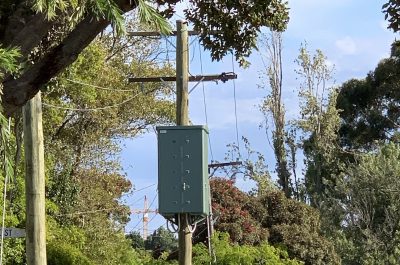Charged up: New guideline to energise distribution battery storage
Battery energy storage systems (BESS) operated by distribution network service providers (DNSPs) are systems used to store electrical energy and provide a range of services to the electricity grid. These systems are typically located within the distribution network, where they help DNSPs manage electricity demand, maintain network stability, and improve grid reliability. BESS enables DNSPs to store excess energy during periods of low demand or high generation (such as when renewable sources like solar or wind are producing more power than is needed) and release it during periods of high demand or reduced generation.
It’s therefore critical that we have guidelines that ‘guide’ the industry towards building battery storage in a consistent, cost-effective and safe manner.
Energy Networks Australia (ENA) is preparing a new technical guideline on all of this, but before we talk about what that guideline covers, let’s take a look on why we need these batteries and the benefits of BESS.
What are the benefits of BESS?
There are range of benefits of BESS for both customers and DNSPs such as:
Peak demand management: BESS helps reduce the load on the grid during peak hours by discharging stored energy, which reduces the need for investment in upgrading network infrastructure.
Voltage and frequency regulation: BESS provides grid stabilisation by responding to fluctuations in voltage and frequency, maintaining the balance between supply and demand.
Deferral of network upgrades: BESS allows DNSPs to defer costly network upgrades by alleviating stress on critical parts of the grid, especially during high-demand periods.
Maximising renewable energy sources: As the share of renewable energy increases, BESS helps smooth out the variability of solar and wind generation by storing excess power when generation is abundant and releasing it when generation is low.
Backup power and resilience: BESS can provide backup power during outages or emergencies, enhancing the resilience of the distribution network, especially in remote or vulnerable areas.
Support for DERs and CERs: BESS can support the integration of DERs/CERs, such as rooftop solar systems, by managing their intermittent output and helping balance the local grid. Also, allowing more homes to export excess solar into the grid.
Microgrid and islanding operations: In areas with microgrids, BESS can allow sections of the grid to operate independently during outages, improving local energy security and self-sufficiency.
To capture most of these benefits, BESS should be located at specific locations on the grid and installed and operated within certain technical standards.
For this reason, there is a need for a technical guideline to ensure this new class of assets are up to scratch and provide a consistent approach to safer, easier and faster deployment across Australia.
It is important to note that while networks don’t see a role being active participants in the wholesale market our recent report The Time is Now – Getting smarter with the grid does show significant benefits in helping to provide the underlying infrastructure for the competitive wholesale market.
What is the purpose of the ENA technical guideline?
For DNSPs, BESS is a new asset class which expected to attract hundreds of millions of dollars of investment within the next few years.
The challenge is that the industry needs to understand, classify and put appropriate processes for this new and fast-growing asset class in their networks quickly.
Late last year ENA formed a working group and engaged EA Technology to begin developing technical guidelines for DNSP owned and/or operated BESS to support DNSPs in this journey.
The purpose of the guideline is to bring consistency across DNSPs on a variety of topics related to BESS to ensure the consistent development of strategies to manage this new asset class of energy storage. In turn, this also provides guidance to the market on what DNSPs are looking for when these types of assets are connected to the grid.
The guideline also provides the supply industry common approaches across DNSPs for designing, installing, commissioning, operating and maintaining BESS.
What does the ENA technical guideline cover?
The BESS systems considered for this guideline are those owned by the DNSPs connected to the low voltage or medium voltage up to 33kV networks primarily used for providing the network support functions.
The guideline covers functional requirements such as battery safety, inverters, site selection, battery performance, emergency services and other equipment and site design requirements.
At this time, the guideline covers technical requirements focusing on Lithium-Ion batteries as the vast majority of BESS constructed in Australia are this type. It also currently covers the technical requirements for battery management systems (BMS) and other control and protection devices.
Other key requirements covered by this guideline are fire and safety requirements for BESS sites. It also requires new thinking for emergency services when things go wrong. DNSPs have been working to develop detailed emergency plans for these rare occasions.
At a high level, emergency plans for such systems depend on many factors such as voltage level and other site considerations as well as a specific manufacturer’s requirements.
Overall, DNSP-operated BESS will play a critical role in modernising distribution networks, improving grid flexibility, and supporting the transition to cleaner energy sources.

